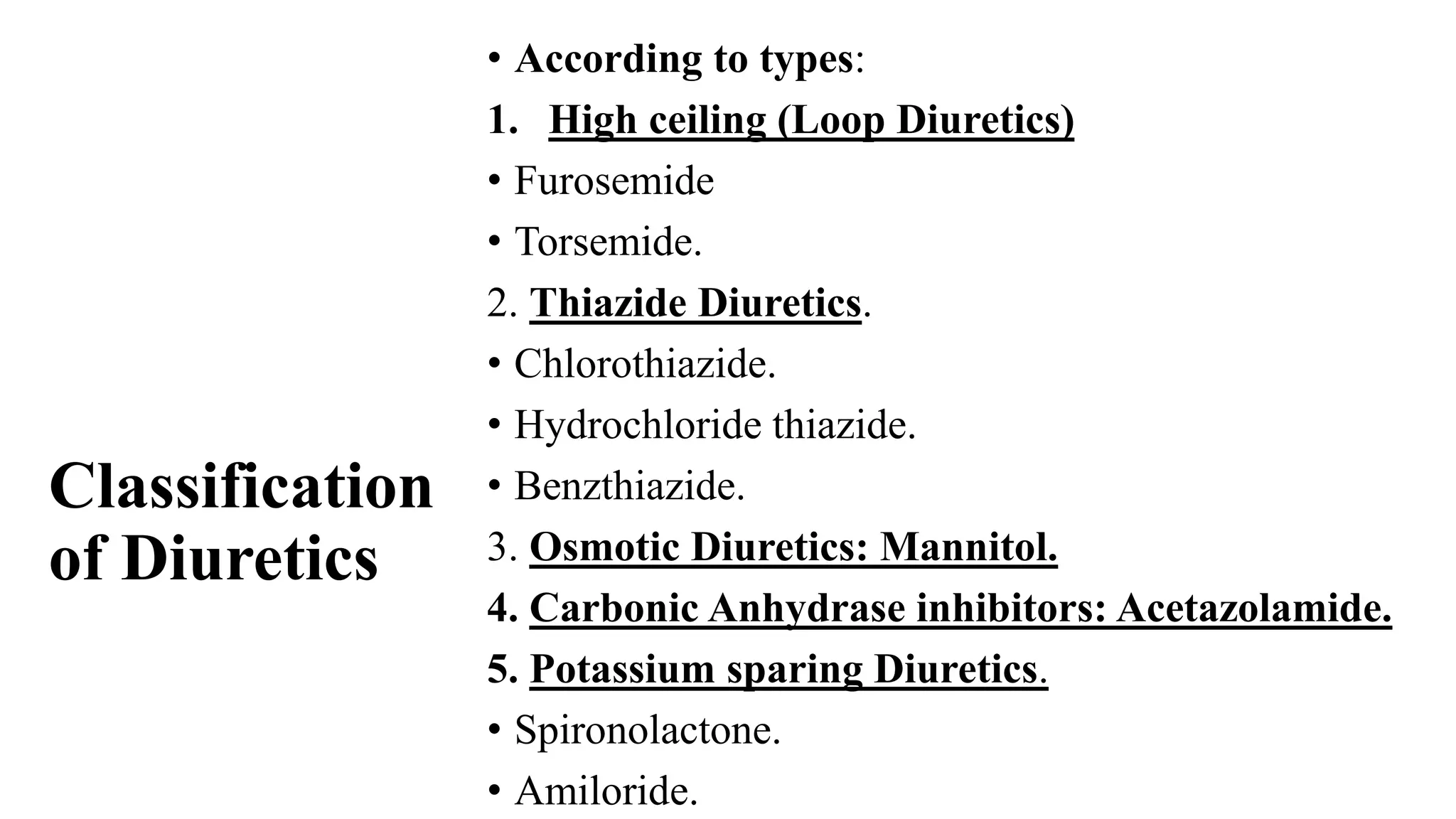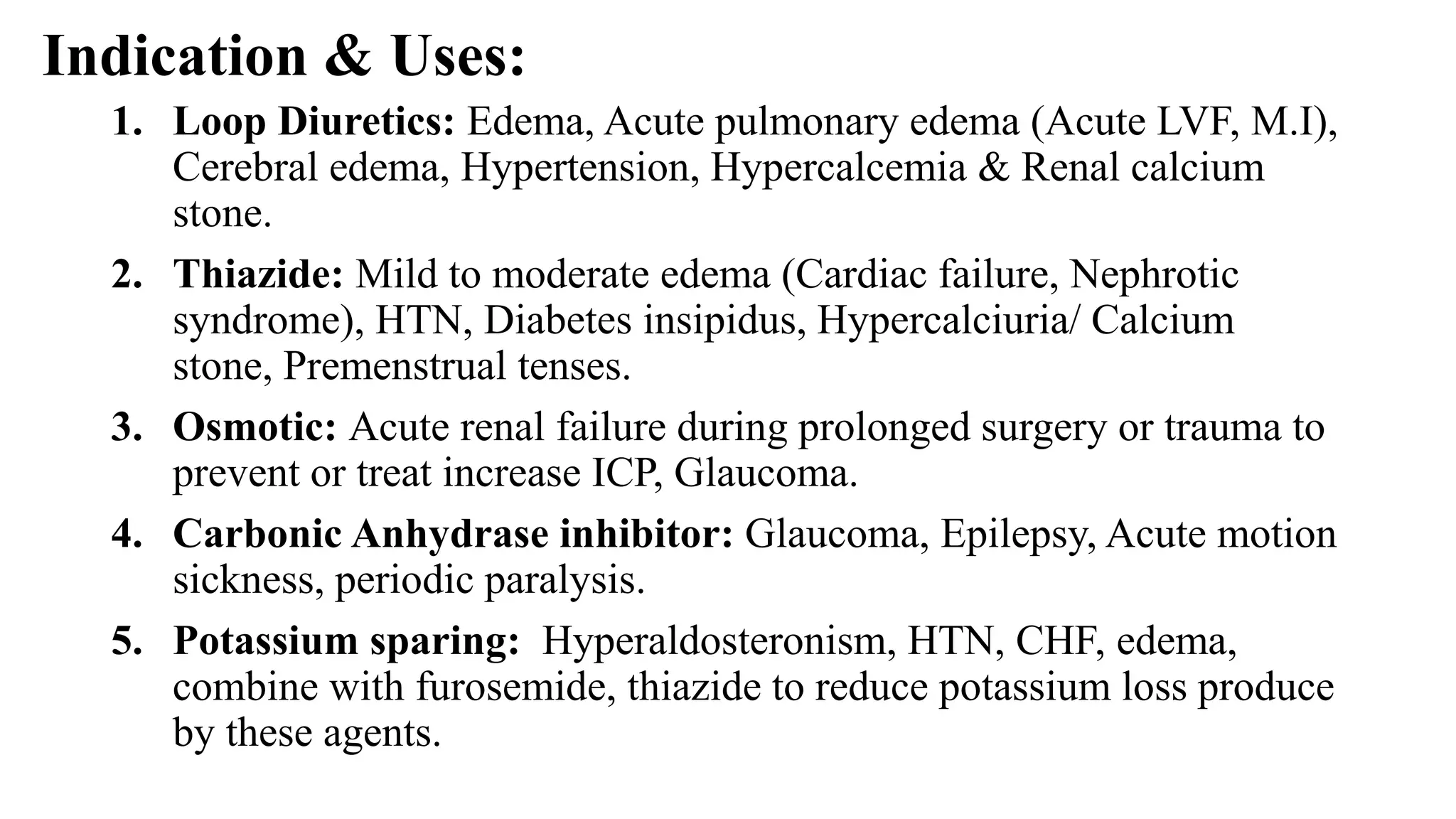The document covers pharmacology of drugs used in the urinary system, focusing on diuretics, antidiuretics, urinary antiseptics, and their classifications, mechanisms of action, indications, contraindications, dosages, and nursing responsibilities. It details various diuretic classes (loop, thiazide, osmotic, etc.), their therapeutic applications, potential adverse effects, and the importance of monitoring electrolyte levels and patient responses. The document also addresses nursing care guidelines, drug interactions, and highlights the significance of patient education regarding medication adherence and lifestyle adjustments.





































